Meet these little creatures in Futian 'rainforest'
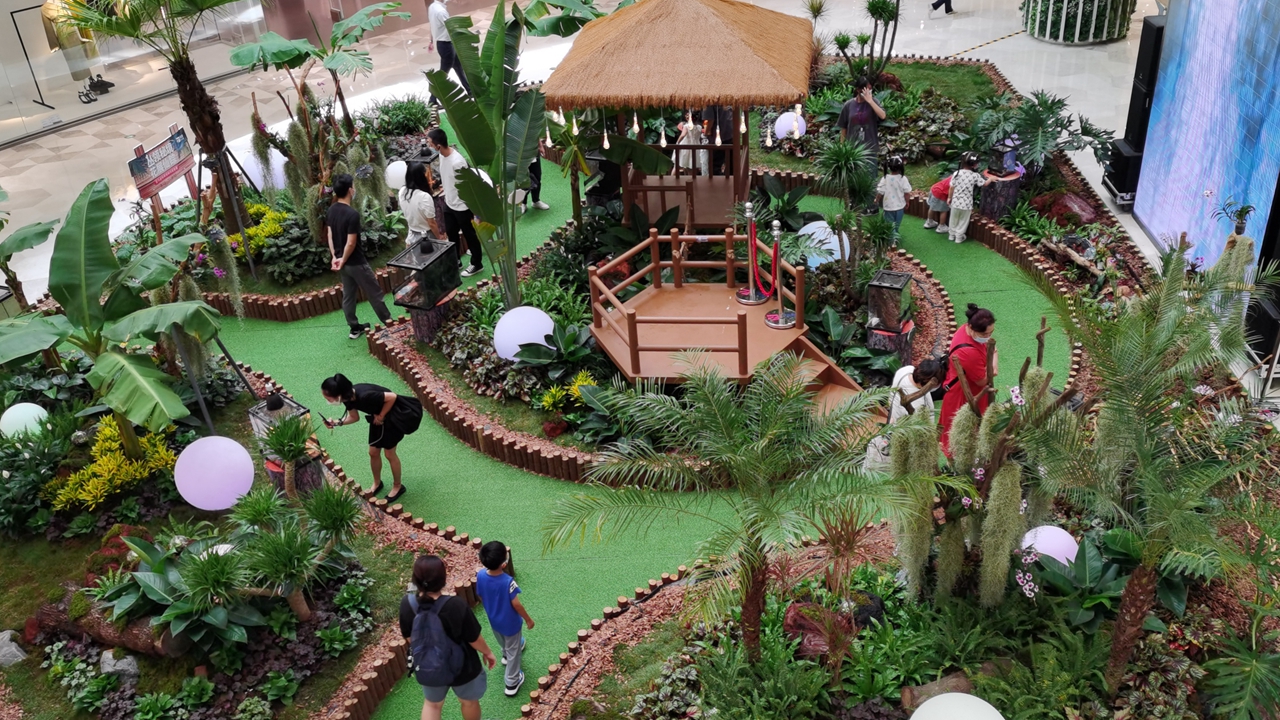
Visitors wander in an area showcasing lush foliage, snakes, lizards and geckos at the Link Central Walk in Futian District. Photos by Cao Zhen
A specially designed area in the Link Central Walk shopping mall features lush foliage and a cottage, as well as creepy snakes, lizards, beetles and geckos. A 15-meter-tall LED screen displaying a huge waterfall and a mist sprayed on the hour from noon to 9 p.m. every day add an enhanced visual effect in the 200-square-meter space, which makes you feel as if you are in the Amazon.
Many of the wild creatures now have become popular pets and the plants have also been used for indoor gardening. Some little creatures hide themselves behind the rocks and plants inside the exhibition boxes, so you’ll have to look carefully to spot them.
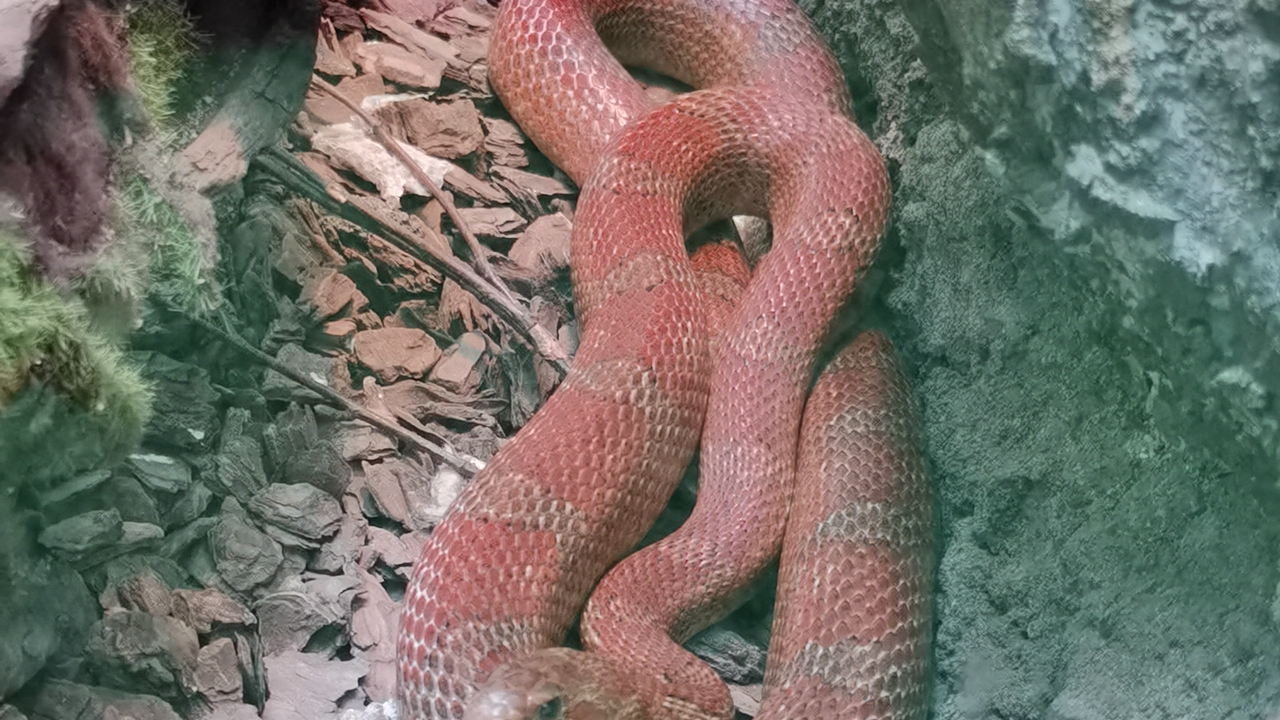
A corn snake.
Corn snake 玉米蛇
The orange or brownish-yellow corn snakes are naturally found in the southeastern United States and along the Gulf of Mexico coast. They lack venom, so they are harmless. Corn snakes are beneficial to humans because they prey on rodent pests that damage crops.
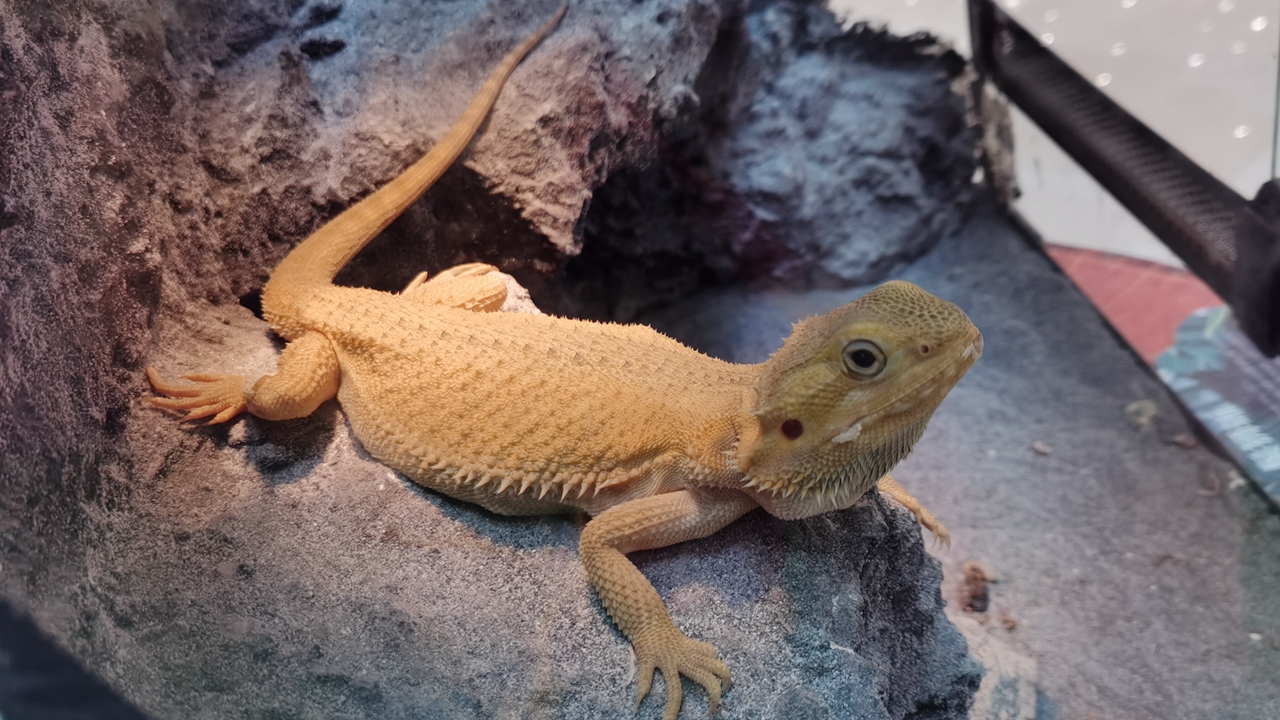
A central bearded dragon.
Central bearded dragon 鬃狮蜥
With a flattened body entirely covered by thorny scales, the central bearded dragon is a species of agamid lizard found in forests and deserts in eastern and central Australia.
Fat-tailed gecko 肥尾守宫
The fat-tailed gecko is a ground-dwelling species of gecko from West Africa. With a thick, caterpillar-like tail, the animal belongs to the subfamily eublepharinae, which also includes the leopard gecko. They are nocturnal and have moveable eyelids which are adapted for preventing dust from entering their eyes.
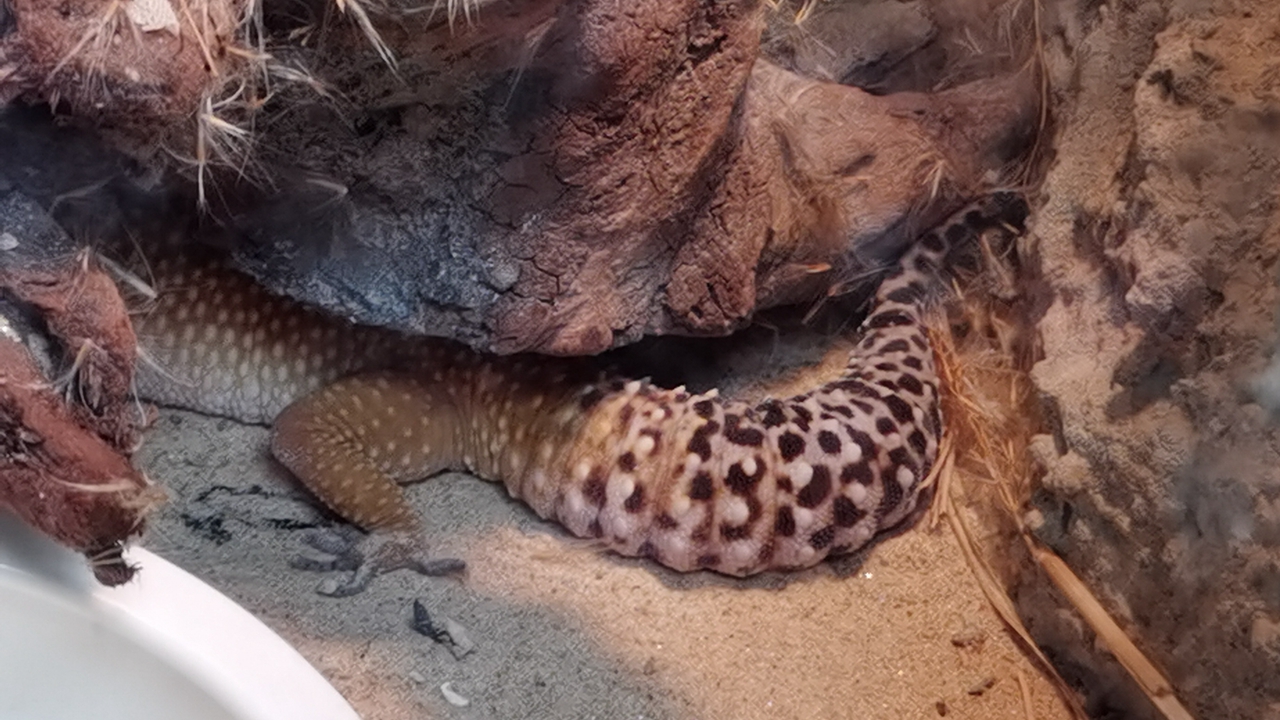
A leopard gecko.
Leopard gecko 豹纹守宫
The leopard gecko is a nocturnal reptile naturally found in India and Pakistan. They also possess movable eyelids.
Rhinoceros beetle 独角仙
Mostly found in China, Japan and Thailand, rhinoceros beetles are herbivorous insects named for the horn-like projections on and around the males’ heads. Most are black, gray, or greenish in color. Other common names of rhinoceros beetles include Hercules beetles, unicorn beetles or horn beetles.
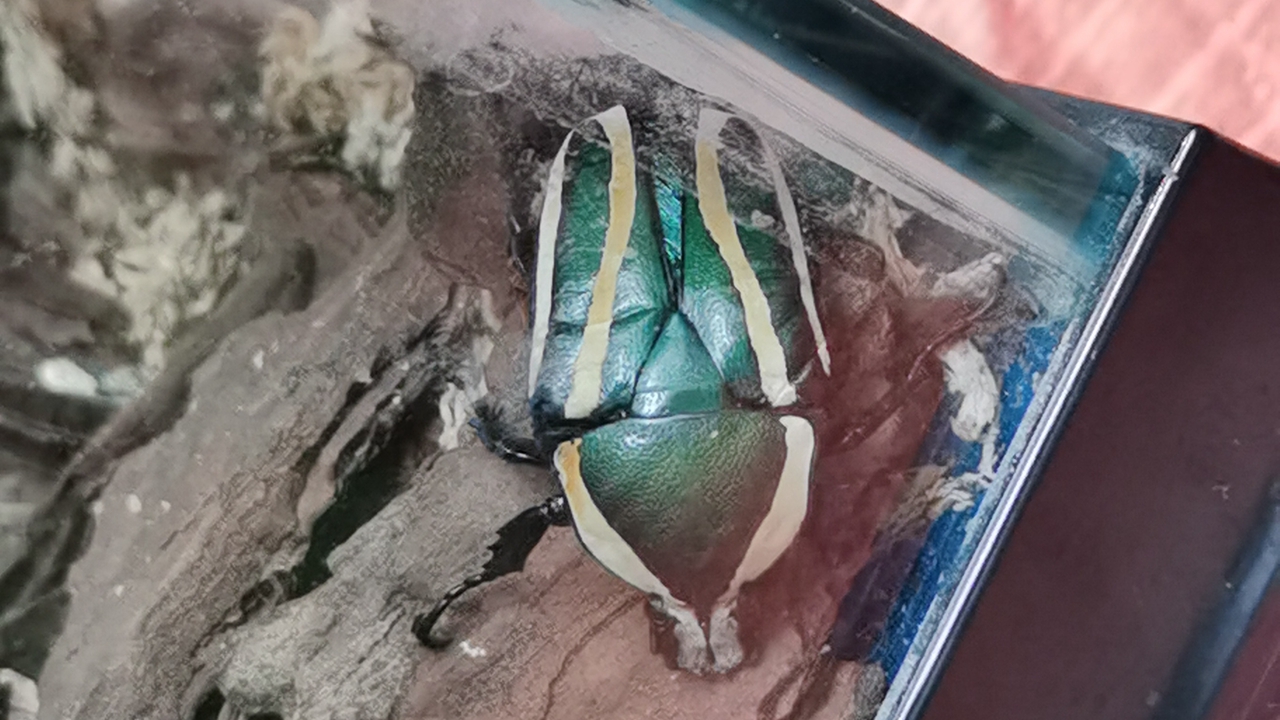
A Derby’s flower beetle.
Derby’s flower beetle 白条绿花金龟
Derby’s flower beetles can be found in Sub-Saharan Africa. They are popular among hobbyists because of their beautiful colors and patterns. They eat fruits and sap.
Tree frog 树蛙
Most tree frogs’ lives are arboreal, meaning they spend a major portion of their lifespan in trees. They are found in tropical and subtropical areas in Asia and Africa.
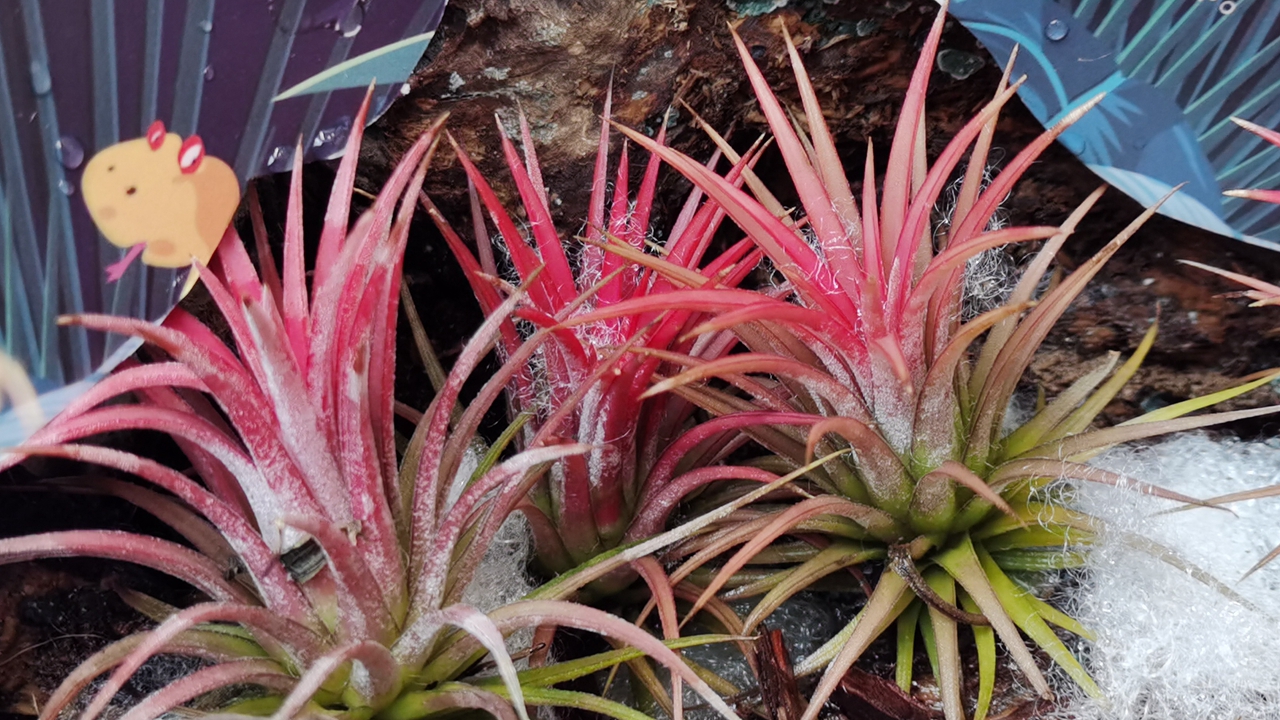
Tillandsia ionantha Fuego.
Tillandsia ionantha Fuego 空气凤梨
Simply beautiful, the plant is naturally found in Central America and South America. It displays red blushing fuzzy leaves when exposed to indirect sunlight. This is an air plant, so no soil is needed.
Bromelioideae 积水凤梨
Bromelioideae has glossy, strap-like leaves which form a water-holding rosette. The water lures insects and the leaves make the perfect shelter for frogs. It is a subfamily of the bromeliads which grow in the canopy layer of rainforests. Most of the plants in this group are epiphytes, plants that get most of their nutrition from the air and rain.
Spanish moss 老人须
Known as “grandpa’s beard,” Spanish moss is an epiphytic flowering plant that often grows upon large trees in tropical and subtropical climates. It is native to the southern United States, Central America and South America.
Orchids with aerial roots 附生兰花
Orchids with air (aerial) roots are also classified as epiphytes. They are usually found living on trees; the orchid’s roots wrap around the limbs, anchoring the plant without penetrating the bark.
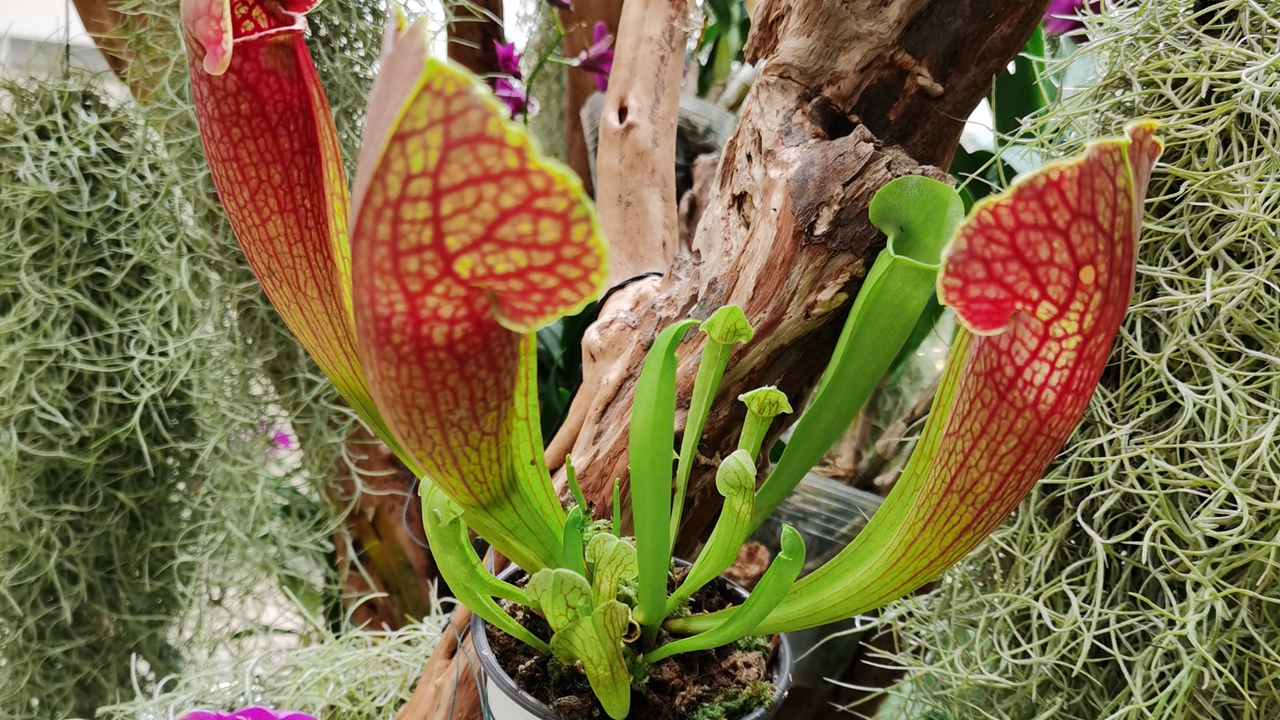
A pot of purple pitcher plant.
Purple pitcher plant 瓶子草
Similar to the famous nepenthes, purple pitcher plant is carnivorous. The bog environment in which wild purple pitcher plants typically grow is nutrient-poor, so the plants need to supplement their diets with food beyond what their roots can pull up. Insects are lured to them by their color and smell. It’s easy for a bug to descend into the plant’s pitcher, but hard for it to get out, due to the slippery internal walls.
Dates: Until Sept. 12
Tickets: Free
Venue: Link Central Walk, Futian District (福田区领展中心城)
Metro: Line 1 or 4 to Convention and Exhibition Center Station (会展中心站), Exit B